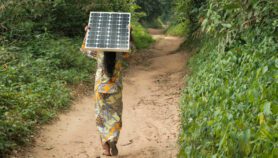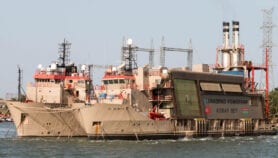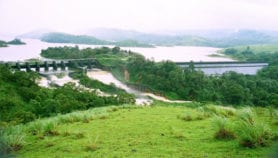By: Aisling Irwin
Send to a friend
The details you provide on this page will not be used to send unsolicited email, and will not be sold to a 3rd party. See privacy policy.
[CHICAGO] Carbon emissions have soared far above the expectations of most climate scientists, according to a leading member of the Intergovernmental Panel on Climate Change (IPCC).
Christopher Field, a lead author on the IPCC’s fourth assessment report published in 2007, said emissions are now far higher than even the worst-case scenario envisaged by that report.
"As a result, the impacts of climate change will probably be more serious and diverse," he told the annual meeting of the American Association for the Advancement of Science (AAAS) in Chicago, United States, last week (14 February).
Field said that while emissions increased at a rate of 0.9 per cent per year between 1990 and 1999, they have increased at a "startling" 3.5 per cent per year since 2000.
He said the surge could be attributed mainly to developing countries such as China and India that have rapidly expanded their electricity generation — using mostly coal to do so.
If developing countries continue to use coal and other carbon-intensive fuels to meet their energy needs this trend can only continue, said Field, director of global ecology at the US-based Carnegie Institution.
"We are looking at a future climate that is beyond anything we have considered in past models," he said.
Since it was founded by the UN in 1988, the IPCC has produced four reports assessing the latest scientific research on human-induced climate change. In its fourth assessment, it used models developed in 2000.
In addition to underestimating future carbon emissions these models did not reflect the complexities of the effects of tropical forests, ocean cycles and the thawing of the Arctic permafrost, said Field.
More recent models show that atmospheric carbon dioxide concentrations could increase as tropical forests are cut down or destroyed by fire — which is increasingly likely as they dry out because of climate change.
"It is increasingly clear that as you produce a warmer world, lots of forested areas that had been acting as carbon sinks could be converted to carbon sources," Field said.
Meanwhile recent studies show that warming has altered wind patterns in the Southern Ocean, which in turn has reduced the ocean’s capacity to soak up excess atmospheric carbon dioxide.
But the most critical, short-term concern arises from new estimates of the amount of carbon that lies frozen in permafrost soils in the Arctic. As the Arctic warms it could release billions of tonnes of carbon into the atmosphere.
"There’s a vicious-cycle component to both the tundra-thawing and the tropical forest feedbacks, but the IPCC fourth assessment didn’t consider either of them in detail. That’s basically because they weren’t well understood at the time."













